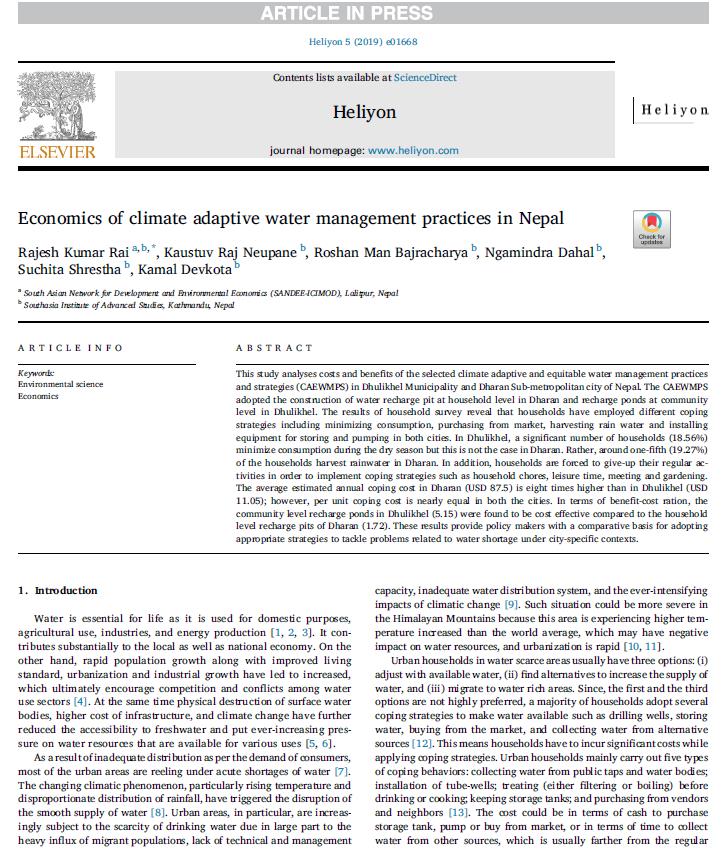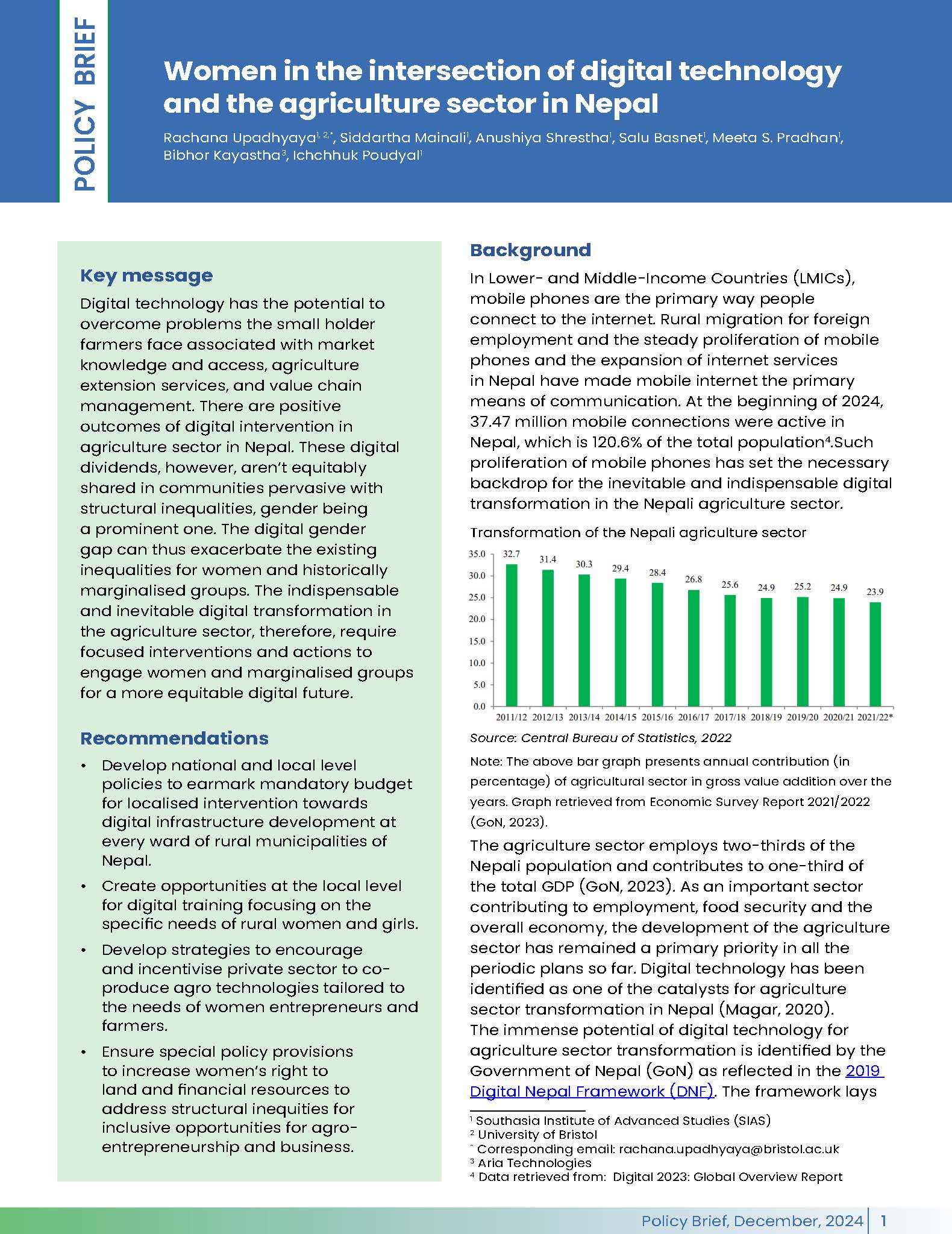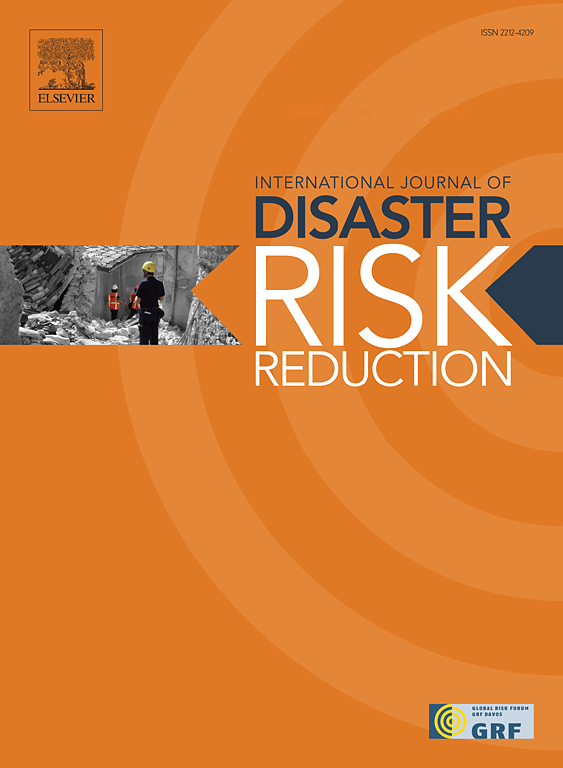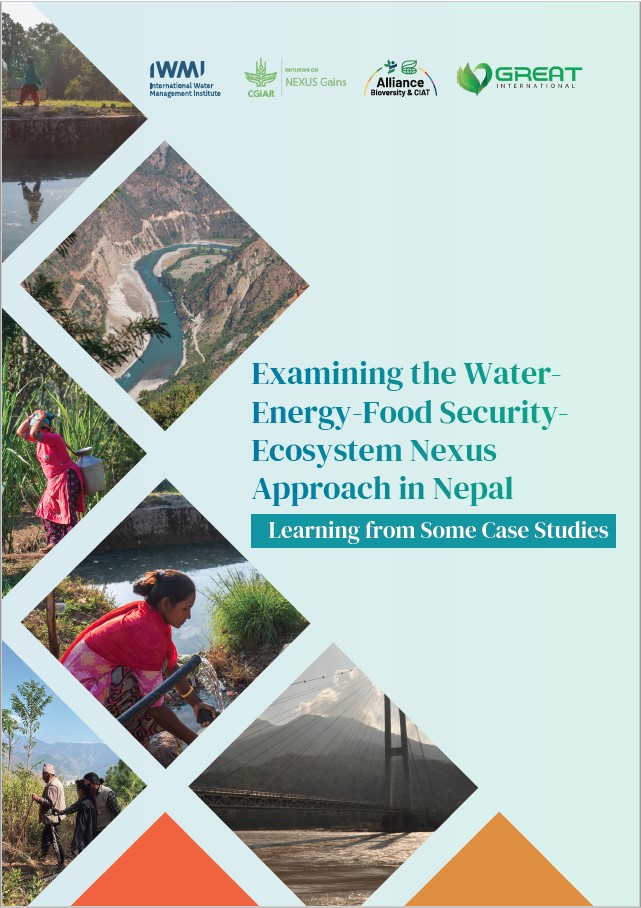Authors : Rajesh Kumar Rai , Kaustuv Raj Neupane , Roshan Man Bajracharya , Ngamindra Dahal, Suchita Shrestha , Kamal Devkota
https://doi.org/10.1016/j.heliyon.2019.e01668
Pages : 1-7
Abstract
This study analyses costs and benefits of the selected climate adaptive and equitable water management practices and strategies (CAEWMPS) in Dhulikhel Municipality and Dharan Sub-metropolitan city of Nepal. The CAEWMPS adopted the construction of water recharge pit at household level in Dharan and recharge ponds at community level in Dhulikhel. The results of household survey reveal that households have employed different coping strategies including minimizing consumption, purchasing from market, harvesting rain water and installing equipment for storing and pumping in both cities. In Dhulikhel, a significant number of households (18.56%) minimize consumption during the dry season but this is not the case in Dharan. Rather, around one-fifth (19.27%) of the households harvest rainwater in Dharan. In addition, households are forced to give-up their regular activities in order to implement coping strategies such as household chores, leisure time, meeting and gardening. The average estimated annual coping cost in Dharan (USD 87.5) is eight times higher than in Dhulikhel (USD 11.05); however, per unit coping cost is nearly equal in both the cities. In terms of benefit-cost ration, the community level recharge ponds in Dhulikhel (5.15) were found to be cost effective compared to the household level recharge pits of Dharan (1.72). These results provide policy makers with a comparative basis for adopting appropriate strategies to tackle problems related to water shortage under city-specific contexts.








